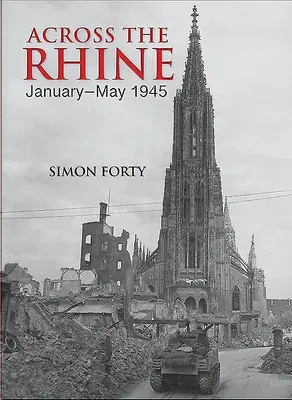The last rites were administered to the Third Reich from the west by a
massive concentration of Allied forces and firepower. With France
secured, Hitler's vain counterattack in the Ardennes held and the
Channel and North Sea ports cleared, little stood in the way of the
Allies other than the dominant geographical feature of western Europe:
the mighty Rhine River stretching from the North Sea almost to
Switzerland.
In the north, the 21st Army Group executed one of the largest operations
of the war: a huge airdrop backed up by an amphibious crossing that made
full use of 79th Armoured Division's specialized armor including the
Alligators of 4th Royal Tank Regiment. Further south, until it collapsed
under the pressure, the Ludendorff Bridge, captured intact at Remagen
allowed US First Army to create a bridgehead. They would use it to good
effect, wheeling north to surround the Ruhr, Germany's industrial
heartland. Further south, where the river was narrower, Patton's Third
Army vaulted the Rhine with its customary elan, as did Devers' Sixth
Army Group.
Ahead of the Allies were the remains of the German forces, often no more
than Volkssturm or Hitlerjugend, determined to resist for as long as
possible so that their Führer had time to unleash his super weapons. In
the end, these proved figments of Hitler's imagination and the defenders
crumbled in the face of units that, after nine months of training, had
become deadly proponents of the art of aggressive warfare with modern
equipment - such as the M26 Pershing and Comet - being rushed to the
front in the hope it could see action before the war finished.

